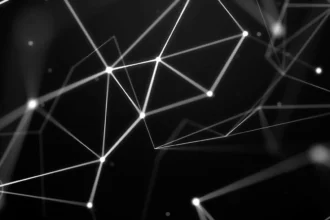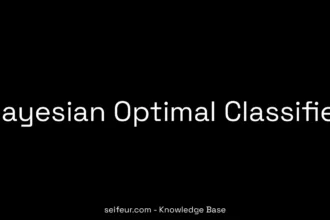Are you ready to take your understanding of LSTM to new heights? Brace yourself for a mind-boggling journey into the world of Stacked LSTM! In this blog post, we will unravel the secrets of this powerful deep learning model and explore its working, advantages, and even its fun sibling – Stacked Bidirectional LSTM. So, fasten your seatbelts and get ready to dive into the captivating realm of Stacked LSTM, where sequences and labels intertwine to create wonders. Get ready to be amazed!
Table of Contents
ToggleUnderstanding LSTM and Stacked LSTM
Embarking on a journey to unravel the intricacies of Long Short-Term Memory (LSTM) networks, we encounter an architecture that has revolutionized the way machines understand sequences. Unlike its predecessor, the traditional recurrent neural network (RNN), LSTM stands tall with its unique ability to capture long-term dependencies, addressing the notorious vanishing gradient problem that often hampers RNNs.
The LSTM’s resilience to this problem stems from its specialized structure, which includes memory cells that act as custodians of information over extended sequences. This allows the LSTM to remember and utilize past insights effectively, a trait that is critical when dealing with complex sequence data such as language, time-series analysis, and more.
Moving a step further, we encounter the Stacked LSTM, a sophisticated variant that elevates the capabilities of its predecessor. Here, we don’t just have a single layer of memory cells but a multilayered cascade, where each layer of LSTM cells contributes to an intricate hierarchy of learned representations. This stacked approach allows for a deeper understanding of the data as features are refined and abstracted at each level, offering a robust framework for tackling more challenging sequence modeling tasks.
| Characteristic | LSTM | Stacked LSTM |
|---|---|---|
| Layer Structure | Single hidden LSTM layer | Multiple hidden LSTM layers |
| Ability to Capture Dependencies | Long-term | More complex hierarchical long-term |
| Complexity | Less complex, suitable for simpler tasks | More complex, suitable for intricate tasks |
| Use Cases | Time-series prediction, text generation | Advanced speech recognition, machine translation |
LSTMs are often chosen over traditional RNNs due to their enhanced memory capabilities. This attribute allows them to retain information across longer sequences, making them adept for tasks where context from the distant past is crucial to understanding the present.
In contrast, a vanilla LSTM entails a more simplistic structure, with just three layers comprising an input layer, one hidden LSTM layer, and a standard feedforward output layer. The Stacked LSTM builds upon this foundation by introducing additional hidden layers, each replete with a multitude of memory cells. This layered architecture not only amplifies the model’s capacity to learn from data but also enables it to dissect and interpret the nuances of complex sequences with greater precision.
Each layer in a Stacked LSTM operates on the output of its predecessor, refining and transforming the data as it ascends through the network. This multi-layered approach paves the way for a more nuanced and fine-grained analysis of sequential data, equipping the network to unravel patterns that might elude a single-layer LSTM.
As we delve into the subsequent sections, we’ll explore the workings of Stacked LSTM, its application in sequence-to-label classification, and the advantages it brings to the table. We’ll also compare it with bidirectional LSTMs and discuss its edge over traditional RNNs, further cementing its position as a powerful tool in the deep learning arsenal.
Working of Stacked LSTM
Imagine a symphony, layers of instruments come together, each adding depth and complexity to the melody. This is akin to the harmonious interplay within a stacked multi-layer LSTM architecture. In this intricate neural network, each layer is like an instrument, playing its unique part in processing temporal data. As the output of one hidden LSTM layer gracefully flows into the next, a cascading effect occurs, enriching the data transformation process at every step.
The elegance of a stacked LSTM lies in its depth. With each additional layer, the network delves deeper into the data’s underlying structure, much like an archaeologist uncovering layers of historical artifacts. These hidden layers act as a series of transformative stages, where the initial raw temporal signals are gradually decoded into more abstract and informative representations. Think of it as a journey through a multi-story building, where each floor reinterprets the information passed up from below, adding its unique perspective to the mix.
As the data ascends through the LSTM layers, it undergoes a metamorphosis. The first layer might learn the rhythm of the input sequence, while the second layer interprets the melody, and the third harmonizes the tune, leading to a full-bodied understanding of the sequence data. This stacked approach allows the model to capture the intricacies of temporal data, making it particularly adept at tasks that require a nuanced interpretation of sequential patterns.
When we consider the advantages of using stacked LSTM, we’re looking at a model that doesn’t just passively process information but actively constructs a multi-dimensional understanding of it. This is essential for complex applications where the difference between a good prediction and a great one can hinge on the model’s ability to integrate and interpret long-term dependencies within the data. Therefore, the stacked LSTM is not just a step up from its predecessors in terms of architecture—it represents a leap in the ability to harness the full potential of sequence data.
It is this very architecture that forms the backbone of stacked bidirectional LSTMs, taking the concept even further by integrating information from both past and future contexts. By doing so, it achieves a level of insight and prediction accuracy that sets a new standard in the field of deep learning. As we progress through this exploration, we’ll delve deeper into how these models are applied to sequence-to-label classification, and the myriad of advantages they bring to the table, shaping them into a formidable tool in our AI arsenal.
Stacked LSTM for Sequence-to-Label Classification
Imagine a maestro orchestrating a symphony, where each musician’s contribution is critical to the harmonious outcome. This is akin to the finely tuned process of sequence-to-label classification using Stacked LSTM. In this complex task, every input sequence is like a musical note that must be understood in the context of its preceding and subsequent notes to assign the correct label — the final melody.
The architecture of a Stacked LSTM model for sequence-to-label classification is as intricate as it is elegant. It comprises four distinct layers, each with a pivotal role in translating raw data into meaningful outcomes. The first layer is the sequence input layer, which welcomes the input sequences, much like the opening notes of a score. Here, data begins its transformative journey through the depths of the neural network.
Following the sequence input is the core of the Stacked LSTM, the LSTM layer itself. This is where the magic happens — temporal dependencies within the data are learned, and the short-term memories are gracefully passed from one time step to the next, preserving essential information akin to a narrative thread in storytelling.
Then comes the fully connected layer, which serves as a bridge, connecting the intricate temporal patterns discovered by the LSTMs to a space where they can be interpreted. It’s a gathering of the learned sequences, now ready to be synthesized into a coherent whole.
This leads us to the penultimate layer, the softmax layer, which plays a pivotal role in the classification process. Here, the network makes its predictions, assigning probabilities to each possible label in a way that mirrors the process of elimination a detective might use to home in on a suspect.
Finally, the journey concludes with the classification output layer, where the input sequence is bestowed with a label, culminating the process like the final note in our symphony — clear, decisive, and resonant.
The advantages of this sophisticated Stacked LSTM model are manifold. By stacking multiple LSTM layers, the model delves into different aspects of the raw temporal signal at each time step. This multi-layered approach allows for a more nuanced understanding, akin to peeling back layers to reveal the core of the narrative. The ability to learn from different temporal scales and complexities enhances the model’s predictive power and its skill in capturing the essence of sequences which are as dynamic and varied as the fabrics of time itself.
Through this innovative structure, Stacked LSTM models offer a compelling solution to sequence-to-label classification challenges, providing insights and predictions with a level of accuracy that single-layer LSTMs or traditional RNNs might not achieve. It’s a dance of layers and neurons, each step meticulously designed to bring us closer to the true nature of our sequential data.
As we move forward through this exploration of Stacked LSTM, let us keep in mind the beauty of this layered approach, which offers not just a powerful tool for prediction but also a deeper understanding of the temporal intricacies that define our world.
LSTM vs. RNN
Picture a relay race where each runner whispers a secret to the next. In the world of neural networks, RNNs are like these runners, passing along information in a sequence. However, when the track is long and winding, RNNs often stumble, struggling to whisper the secret to the last runner. This is the notorious vanishing gradient problem, where the strength of the message fades as it travels across many layers, rendering RNNs forgetful of long-ago inputs.
Enter the Long Short-Term Memory (LSTM) networks. Like a team equipped with walkie-talkies, LSTMs ensure that no part of the message is lost, no matter the distance. Each LSTM cell is a mini-sorcerer, conjuring up the ability to remember and forget with its gates, preserving only the essential information needed for the final sprint towards the finish line. It’s this magical prowess that makes LSTMs the preferred choice for tasks where the past holds the key to the future.
When faced with the challenge of sequence-to-label classification, the choice between LSTM and RNN becomes particularly crucial. It’s not just about remembering the distant past; it’s about capturing the intricate dance of patterns that play out over time. The LSTM’s design explicitly addresses these challenges, granting it the power to weave together threads of information that span across vast stretches of time, creating a tapestry of understanding that simple RNNs can only dream of.
Some might wonder if the Stacked Bidirectional LSTM (BiLSTM) is the superior champion in all scenarios. BiLSTM layers, marching forward and backward through time, offer a panoramic view of the sequential landscape. However, like all tools, they shine brightest in the right context. While they can illuminate hidden patterns by considering both past and future context, they may be an overkill for simpler tasks, where a traditional LSTM would suffice.
As we continue to unravel the mysteries of sequential data, the question arises: Is there a contender that could dethrone LSTM? The Gated Recurrent Unit (GRU) steps into the arena as a worthy adversary, boasting a simpler structure that can be quicker to train and run. Yet, GRUs may not always hold the same capacity for capturing long-term dependencies, making the choice between LSTM, GRU, and other variants a strategic decision based on the unique intricacies of the task at hand.
That said, LSTMs are not without their own set of challenges. Their complexity requires a heftier volume of data to learn effectively, and their intricate internal mechanisms can make them sluggish learners on large datasets. They also prefer the structured choreography of sequences, not quite adept at the ad-hoc rhythms of online learning tasks. Nevertheless, when the mission is to decipher the long and winding roads of sequential data, LSTMs stand tall as the time-tested voyagers.
In the grand scheme of neural networks, selecting between LSTM and RNN is akin to choosing the right vessel for a treacherous sea voyage. One must consider the length of the journey, the cargo of data, and the nature of the tempests that lie ahead. As we navigate these choices, the clarity of purpose and a deep understanding of our tools will guide us to the shores of insight and prediction.
Q: What is the difference between LSTM and stacked LSTM?
A: The original LSTM model consists of a single hidden LSTM layer, while the stacked LSTM has multiple hidden LSTM layers, each containing multiple memory cells.
Q: Is stacked LSTM better than LSTM?
A: Yes, stacking LSTM layers can improve the model’s ability to learn more informative representations of input sequences, potentially leading to better generalization and more accurate predictions.
Q: What is stacked bidirectional LSTM?
A: In a stacked multi-layer LSTM architecture, the output of a hidden layer is fed as the input into the subsequent hidden layer. This stacking layer mechanism enhances the power of neural networks and is adopted in the proposed architecture.





